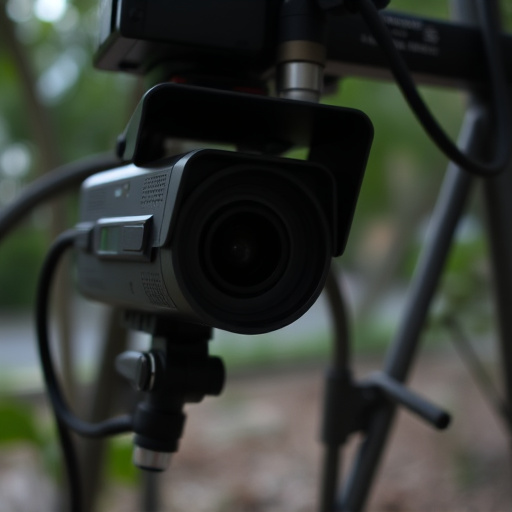Hidden nanny cams pose a significant privacy concern, prompting the development of advanced smartphone apps for detection. These apps leverage various technologies like high-res cameras, image processing, motion detection, and thermal imaging to identify concealed devices, with video quality comparison as a key indicator. Accurate app assessments are crucial in choosing effective protection against privacy breaches, with immediate action recommended upon detection, including isolation, documentation, and utilization of specialized app solutions for enhanced security.
Uncover the hidden eyes: learn how to detect covert cameras using your smartphone. In an era where privacy is paramount, understanding the types of hidden cameras and their detection challenges is crucial. This article equips you with powerful smartphone features and apps for visual and technical camera detection. We delve into a Nanny Cam video quality comparison, highlighting practical best practices for enhancing safety post-detection. Stay vigilant, stay informed – your digital privacy starts here.
- Understanding Hidden Cameras: Types and Their Detection Challenges
- Smartphone Features for Camera Detection: Visual and Technical Tools
- Comparative Analysis: Uncovering Nanny Cam Quality through Smartphone Apps
- Best Practices for Enhancing Safety: Post-Detection Steps and App Recommendations
Understanding Hidden Cameras: Types and Their Detection Challenges
Hidden cameras, also known as nanny cams or surveillance devices, come in various types and forms, each presenting unique challenges when it comes to detection. These range from miniature cameras that can be easily concealed in everyday objects like pens, keys, or even clothing, to more sophisticated models disguised as common household items like picture frames or smoke detectors. The primary challenge in detecting these hidden cameras is their design intent—to remain unseen and often operate remotely, making them hard to spot with the naked eye.
Furthermore, advancements in technology have led to a wide range of video quality levels among hidden cameras, from low-resolution models that may capture only vague images to high-definition (HD) cameras capable of recording crisp, detailed footage. This variable video quality adds another layer of complexity to detection methods, requiring users to employ specialized smartphone apps and techniques that can analyze image patterns, detect motion, or even identify specific visual cues known to be present in hidden camera footage, such as the telltale signs left by the infrared illumination often used in these devices.
Smartphone Features for Camera Detection: Visual and Technical Tools
Smartphones, with their sophisticated hardware and software capabilities, offer a range of tools to help detect hidden cameras. One of the primary ways is through visual analysis. High-resolution cameras on modern smartphones allow users to capture detailed images and videos, enabling them to spot small objects like tiny lenses or peculiar markings that might indicate the presence of a hidden camera. Apps with advanced image processing algorithms can enhance contrast and sharpness, making it easier to identify these subtle details.
On a technical level, smartphone sensors play a crucial role. The device’s accelerometer can detect unusual movements, potentially indicating a panhandling camera. Additionally, some apps utilize infrared or thermal imaging capabilities to uncover hidden cameras, as these devices are often undetectable by the human eye. Moreover, analyzing video quality and frame rates can be telling; hidden nanny cam videos, for instance, might exhibit lower resolution or inconsistent framing compared to standard recordings, raising suspicion.
Comparative Analysis: Uncovering Nanny Cam Quality through Smartphone Apps
In today’s digital age, the prevalence of hidden cameras, particularly nanny cams, has sparked a demand for effective detection methods using readily available smartphones. Smartphone apps designed to uncover such devices have gained traction due to their accessibility and ease of use. These applications employ various techniques, from analyzing video feed patterns to detecting subtle anomalies in image processing, all aiming to identify potential hidden cameras.
Comparative analyses of these apps often revolve around testing their ability to discern between ordinary home surveillance footage and hidden nanny cam videos. The focus is on the quality of the detected results, including accuracy rates in identifying camera presence, resolution comparisons of captured footage, and the overall performance across different smartphone models and operating systems. This analysis facilitates users’ informed choices when selecting apps that best suit their needs, ensuring effective protection against potential privacy breaches.
Best Practices for Enhancing Safety: Post-Detection Steps and App Recommendations
Best Practices for Enhancing Safety: Post-Detection Steps and App Recommendations
After successfully detecting a hidden camera, the next crucial step is to take immediate action to enhance your safety. Begin by isolating the affected area, ensuring no one enters until a thorough search is conducted. Next, document the location of the camera, including detailed notes on its appearance, size, and any unique identifiers. This information will be vital for further investigations and identifying potential sources.
For enhanced security moving forward, consider using app-based solutions that offer advanced privacy protection. Apps specializing in hidden camera detection often provide additional features like video quality comparison tools, helping you discern legitimate threats from false alarms. These apps may also integrate with your smartphone’s camera to conduct real-time scans, making it easier to identify and mitigate potential risks. Popular choices include those known for their robust algorithms and regular updates, ensuring protection against the latest camera technologies, including so-called “nanny cam” devices designed for covert surveillance.
In conclusion, while hidden cameras pose a significant privacy concern, smartphone technology offers powerful tools for their detection. By leveraging visual and technical capabilities, users can uncover malicious devices like nanny cams using various apps. The article has outlined key methods, including a comparative analysis of video quality, to empower individuals with knowledge and practical steps to enhance their safety in today’s digital world. Adopting these smartphone-based solutions is a proactive approach to countering the challenges posed by hidden cameras, ensuring a more secure environment for personal spaces.
